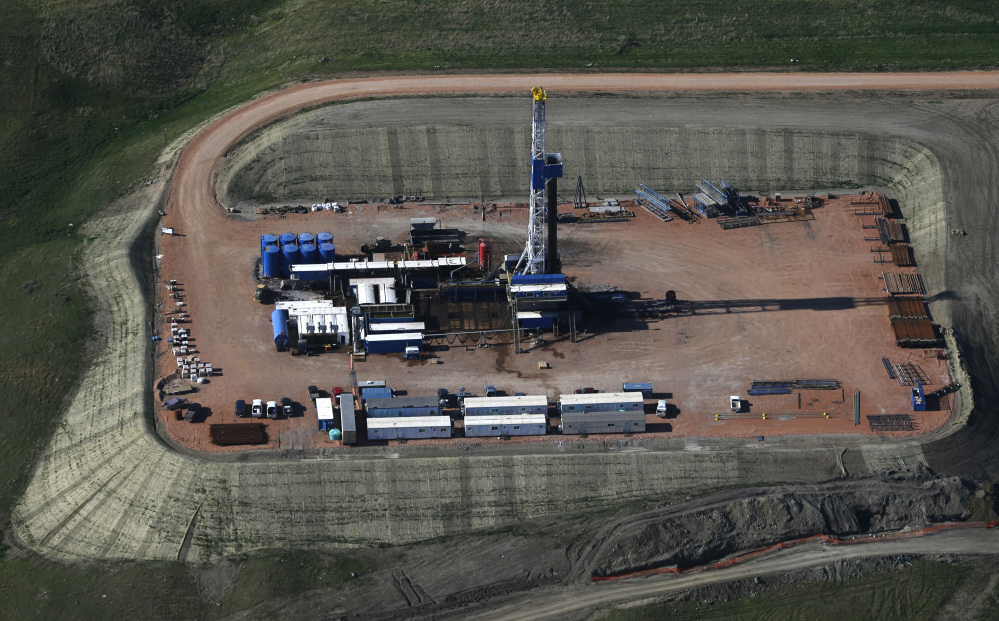A renewed plunge in oil prices is a worrying sign of weakness in the global economy that could shake governments dependent on oil revenues. Yet it is also a bonus for consumers as prices fall at the pump, giving individuals more spending money and lowering costs for many businesses.
The latest slide follows OPEC’s decision to leave its production target at 30 million barrels a day. Member nations of the cartel are worried they’ll lose market share if they lower production.
Partly because of the shale oil boom in the United States, the world is awash in oil at a time when demand from major economies is weak – so prices are falling. Citibank analysts wrote in a report Thursday that global supplies exceed demand by about 700,000 barrels a day now.
The price of U.S. crude oil dropped $7.54 a barrel, or 10 percent, to $66.15 Friday and is down 38 percent since hitting $107 in June. Brent crude, an international benchmark, fell 3 percent to $70.15 a barrel Friday.
Tom Kloza, chief oil analyst at the Oil Price Information Service, expects the price to fall by another $5 or $10 a barrel before stopping. “It’s that kind of rout,” he said.
Overall, the slide is a boon for consumers in oil-importing regions like Asia, Europe and North America. But there are also some possible negatives.
NORTH AMERICA
The U.S. economy will receive an outsized benefit from lower oil prices because the United States is the world’s largest oil consumer.
U.S. consumers have been surprised and delighted at the lowest gasoline prices since 2010. Drivers in some low-cost states such as South Carolina, Missouri, Oklahoma and Texas could see prices below $2, according to Kloza.
The U.S. national average was $2.79 on Friday. Kloza expects gas to eventually be a full $1 per gallon below its June peak of about $3.70 a gallon. That would save typical households $60 a month for those that burn 60 gallons of fuel.
“It’s a nice easy, calculation,” Kloza said. “These are numbers that we would have regarded three or four months ago as something from the lunatic fringe.”
The bottom should come between $2.50 and $2.70 a gallon, Kloza says.
Canadian consumers are also catching a break. In some regions, such as southern Ontario, gasoline could fall below the important psychological barrier of $1 per liter.
The oil companies propelling a production boom in Canada and the United States won’t be so happy. Crude produced in Canadian oil sands, deep offshore in the Gulf of Mexico and in some U.S. onshore shale formations is some of the most expensive oil to produce in the world.
WESTERN EUROPE
Many of Europe’s economies are net importers of oil, so lower prices are likely to give a welcome, if small, boost to growth. Cheaper energy reduces costs for industry and puts more money in consumers’ pockets. That will be particularly useful in the 18-nation eurozone, where unemployment is high.
In Germany, the price of Super E10 fuel has fallen from $7.16 per gallon at the start of September to $6.69 per gallon this week, according to the ADAC motoring association.
Declining fuel prices also, however, add to one of the eurozone’s biggest headaches: low inflation. Weak inflation makes it harder for troubled economies such as Greece to reduce debt. It is also a problem for the European Central Bank, which wants to boost inflation from just 0.3 percent currently to around 2 percent.
VENEZUELA
Venezuela pushed for an OPEC cut because it badly needs high oil prices to fund its government. The country’s oil production has been steadily declining for years, so the combination of lower output and lower prices is already squeezing the nation’s finances.
Venezuelan drivers won’t immediately see a difference in price, though, because gasoline is heavily subsidized. Drivers there pay the equivalent of 5 cents a gallon.
JAPAN
In Japan, which is a net importer of oil, cheaper crude prices have been slow to filter down to consumers.
Also, a recent drop in the yen’s value will reduce the savings Japan can reap from lower oil prices.
In June, regular gasoline cost $5.29 a gallon at the Esso filling station in Shimbashi, near the glittering Ginza shopping strip in Tokyo. The price was $5.44 a gallon Friday morning.
Prices are expected to fall but that will complicate the government’s efforts to end Japan’s deflation.
Copy the Story LinkSend questions/comments to the editors.



Success. Please wait for the page to reload. If the page does not reload within 5 seconds, please refresh the page.
Enter your email and password to access comments.
Hi, to comment on stories you must . This profile is in addition to your subscription and website login.
Already have a commenting profile? .
Invalid username/password.
Please check your email to confirm and complete your registration.
Only subscribers are eligible to post comments. Please subscribe or login first for digital access. Here’s why.
Use the form below to reset your password. When you've submitted your account email, we will send an email with a reset code.